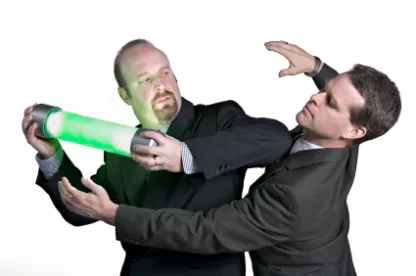Congress introduced inter partes review (IPR) proceedings as part of the America Invents Act (AIA) to provide for speedier and cheaper challenges to issued patents. The Supreme Court recently considered some fundamental challenges to IPRs in Cuozzo v. Lee, an appeal of the first IPR instituted by the U.S. Patent and Trademark Office (PTO). The Court held that IPR institution decisions cannot be appealed and upheld the PTO’s “broadest reasonable construction” standard for claim construction in an IPR. The holdings make IPRs more attractive for petitioners as a mechanism for adjudicating patent validity.
The PTAB Cancels the Challenged Claims
In 2004, the PTO granted to Cuozzo Speed Technologies, LLC (Cuozzo), U.S. Patent No. 6,778,074 (Cuozzo Patent) relating to a speedometer that contained information about all the speed limits on the nation’s roads and was connected to a Global Positioning System (GPS) receiver. The speedometer, therefore, was configured to alert a driver violating a speed limit on any road.
Garmin, a company specializing in GPS technology development, petitioned the Patent Trials and Appeals Board (PTAB) at the PTO to review certain claims of the Cuozzo Patent. In its IPR petition, Garmin challenged only claim 17 of the Cuozzo Patent. But the PTAB instituted the IPR for claims 10 and 14 as well. The PTAB reasoned that because claim 17 depended on claims 10 and 14, Garmin had “implicitly challenged” claims 10 and 14. Construing the challenged claims under the PTO’s broadest reasonable interpretation standard, the PTAB concluded that the challenged claims of the Cuozzo Patent were obvious and cancelled the claims.
The Federal Circuit Decision Affirms the PTAB Decision
Cuozzo appealed the decision of the PTAB on two grounds. First, Cuozzo argued that the PTO’s decision to institute the IPR for claims 10 and 14 based on Garmin’s “implicit challenge” was improper. Second, Cuozzo argued that the Board improperly applied the “broadest reasonable construction” standard for claim construction and that it should have applied the “ordinary meaning” standard followed by courts.
The Federal Circuit held against Cuozzo on both issues. As to the first, the Federal Circuit held that the IPR statute makes the decision to institute an IPR “final and non-appealable,” disallowing any challenge to the PTAB’s institution decisions. As to the second issue, the Federal Circuit held that the PTO’s regulation promulgating the “broadest reasonable construction” standard for claim construction was reasonable and, therefore, a lawful exercise of power statutorily delegated to the agency.
The Supreme Court Decision
Cuozzo then sought review by the Supreme Court, and the Court affirmed on both grounds. As to the appealability of the PTAB’s institution decision, the Supreme Court held that Congress has given the PTO full discretion for its IPR institution decisions. The Court first pointed to §314(d) of the IPR statute that renders institution decisions “final and non-appealable.” Next, the Court underscored the congressional policy objective in delegating “significant power” to the agency to weed out weak patents. Other provisions of the IPR statute and related statutes, explained the Supreme Court, reinforce this view of the congressional objective. For example, Congress granted to the PTO under §317(a) of the IPR statute the authority to carry IPR proceedings forward even after parties settle. Thus, the Supreme Court held that the IPR statute overcomes the otherwise strong presumption in favor of judicial review because of its express “No Appeal” provision, “along with its place in the overall statutory scheme.”
As to the issue of the proper standard for claim construction in an IPR, the Supreme Court held that the PTO was entitled to significant deference under Chevron. The Supreme Court explained that Congress authorized the PTO to adopt a claim construction standard, which was the “broadest reasonable construction” standard. Congress did this in two ways: by not specifying the claim construction standard and by allowing the PTO to issue rules governing IPR under §316(a)(4) instead. The Court found the standard to be reasonable because it would compel a patent draftsman to draw claims that were narrowly tailored to the actual invention. Thus, the regulation is a “reasonable exercise of lawmaking authority” and, therefore, lawful.
Interestingly, the Court rejected Cuozzo’s argument that different claim construction standards between the agency and the courts would lead to inconsistent results. The Court explained that “different evidentiary burdens mean that the possibility of inconsistent results is inherent to Congress’s regulatory design.” The Court’s view here may have implications beyond the narrow issue presented in Cuozzo v. Lee.
The Upshot
The Cuozzo v. Lee decision will provide further encouragement for IPR petitioners. First, no appeal of an institution decision means the PTAB may go full speed ahead without being ‘pulled over’ and be able to meet its 18-months-to-final-decision timeframe. Second, the more lenient claim construction standard increases the likelihood that IPR petitioners will be successful in challenging claims.


 />i
/>i
